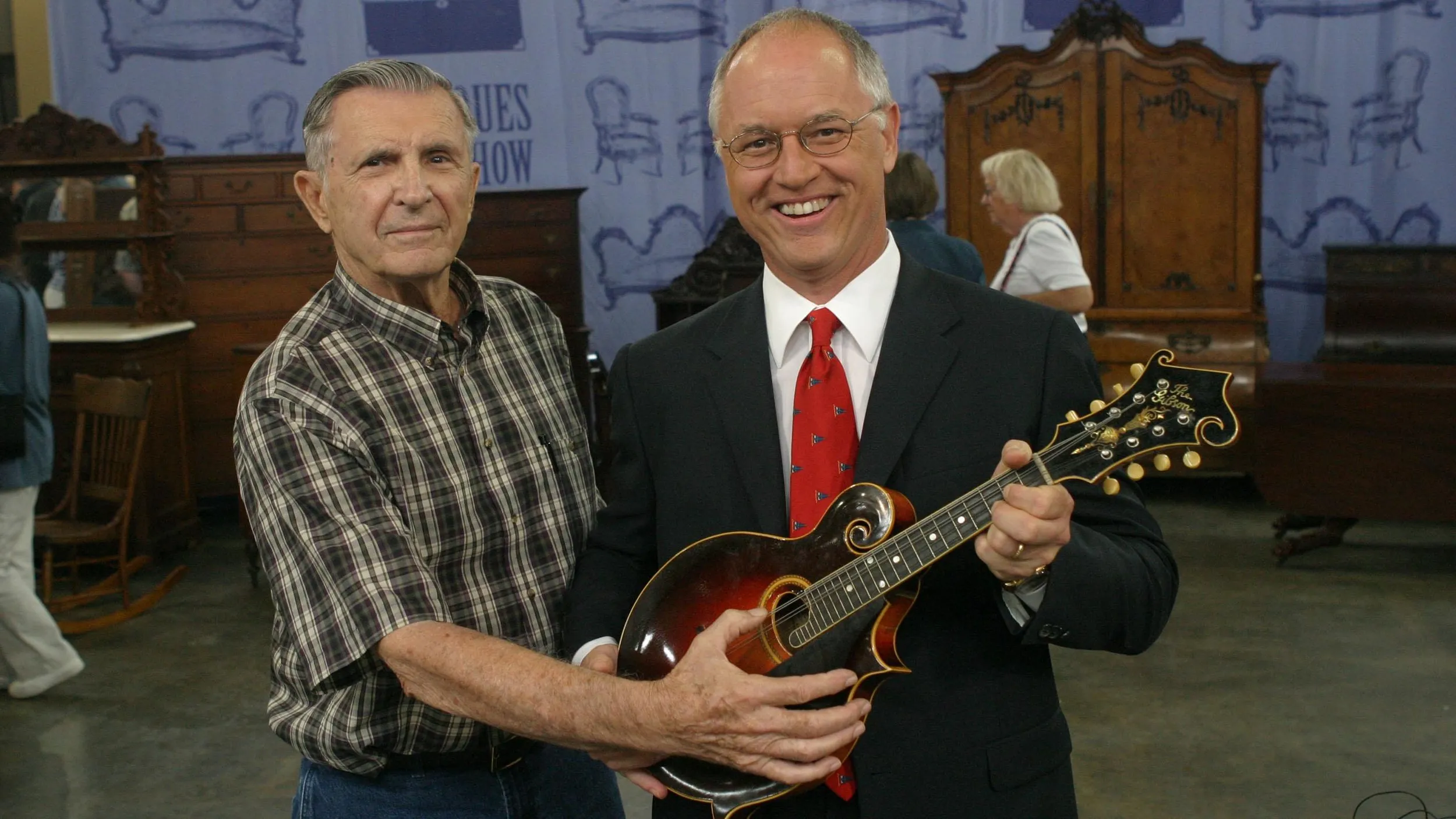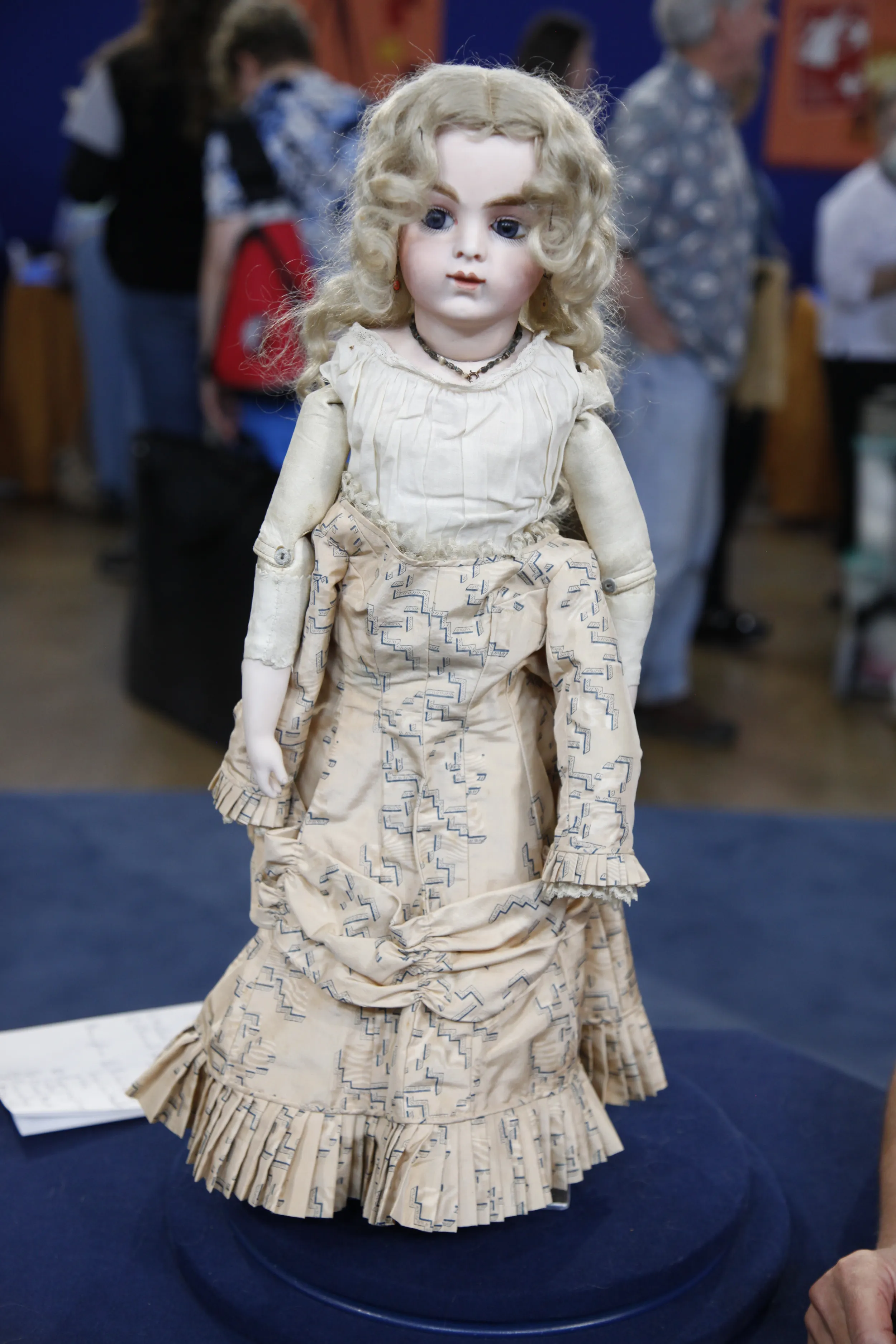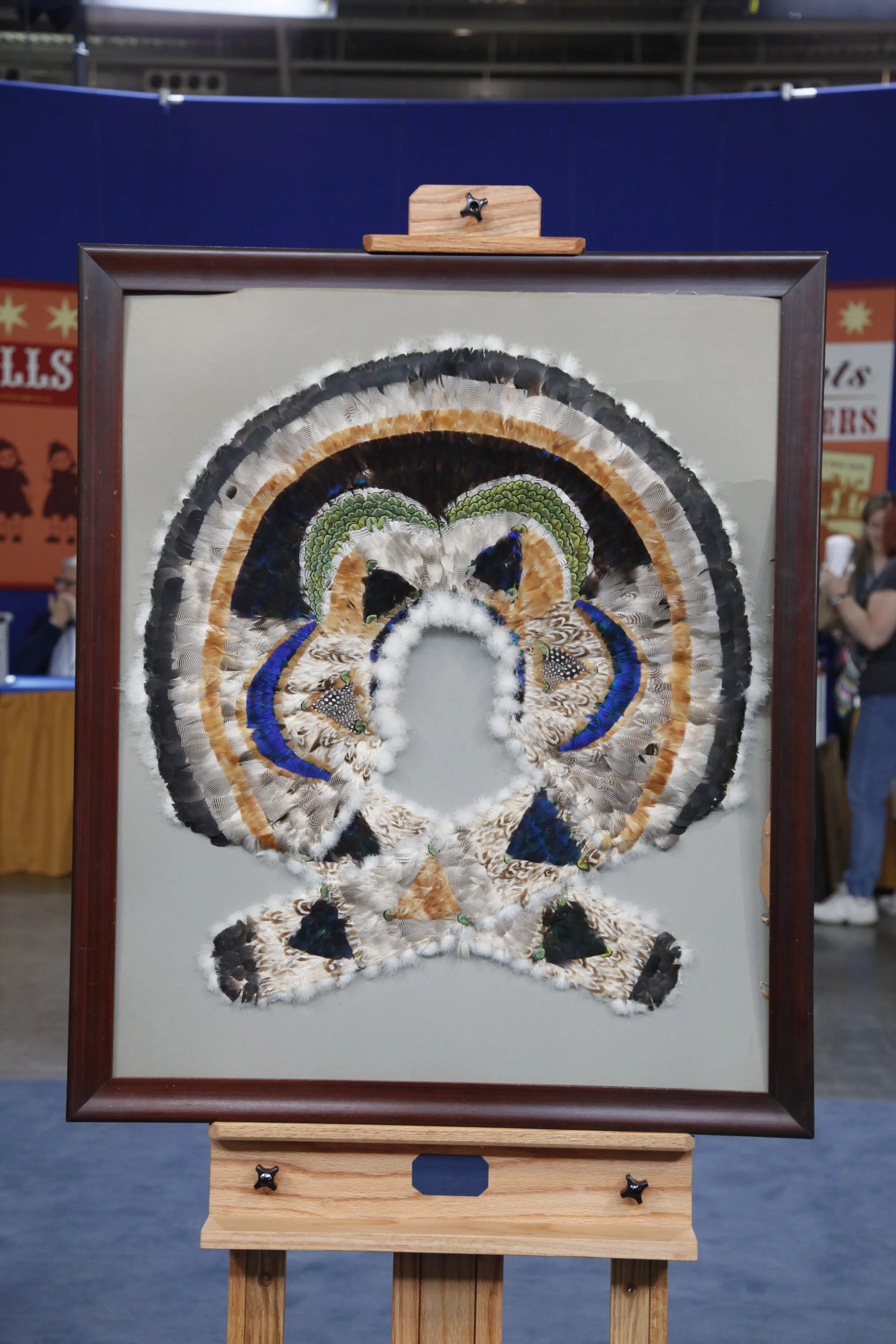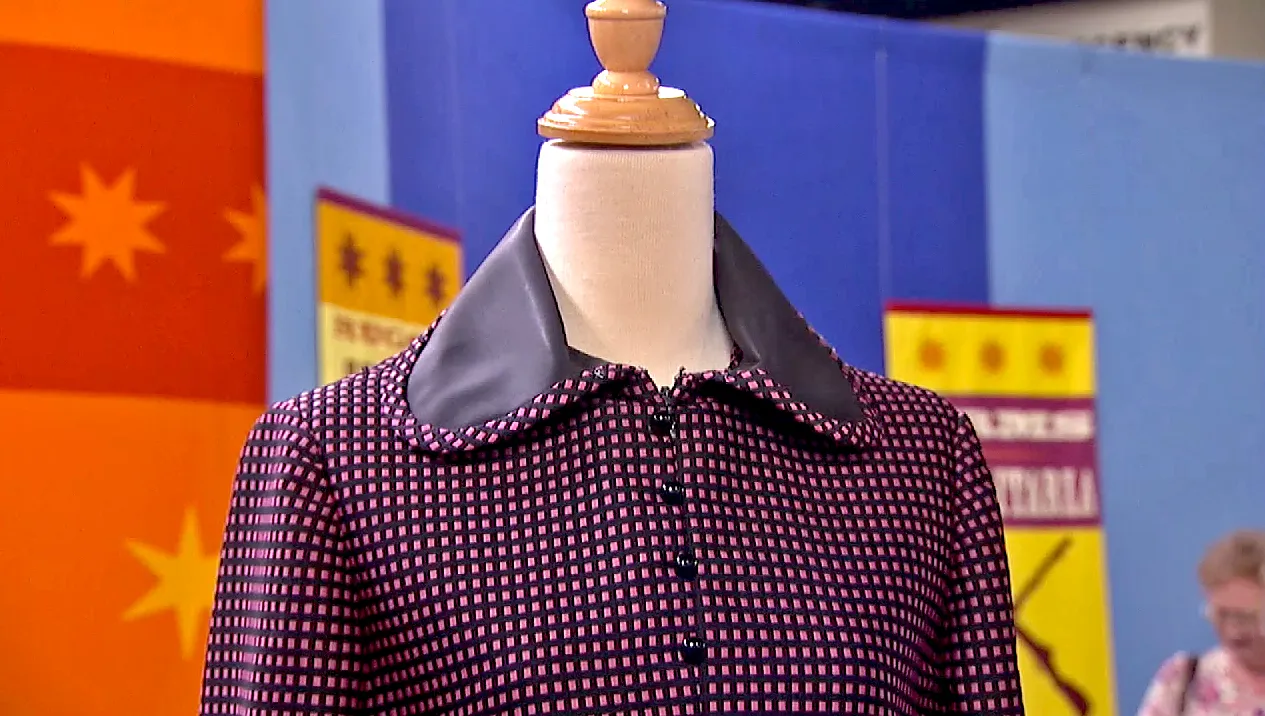GUEST: Well, it's come down through my mother's family. And the bride was born in 1770, I believe.
APPRAISER: Right, uh-huh.
GUEST: And apparently, she wove the fabric and made her dress.
APPRAISER: It's a typical 18th-century dress. And I don't know whether you know this, but dresses open up the front until the 1820s.
GUEST: I didn't know.
APPRAISER: And there are a lot of reasons for that, but one is, is that it was easy to nurse. And a dress was very multi-functional, and you could get bigger in it.
GUEST: Yes.
APPRAISER: And she must have gotten bigger, because the dress has been altered, and there's this strip down here which shows that is was made larger. And then she put a little piece in here, probably so she didn't have to close it so much, like that. And these are detachable sleeves. And it meant that maybe when it wasn't quite as warm, she could've covered her arms. And very different than contemporary construction is that the sleeves go in very far in the back, which means that the woman couldn't have lifted her arm up more than about to here. So she was limited in her motion. So this was her wedding dress, wasn't it?
GUEST: That's what I understand, yes.
APPRAISER: I think the most interesting thing about it is, we think of cotton as an informal fabric, but in the 18th century, it was a very rare fabric, and a wonderful fabric to have, and it required a lot of work to wear and own it. I think that I would value it for sale in a gallery between $6,000 and $8,000.
GUEST: Oh, that's wonderful, and what a surprise.











